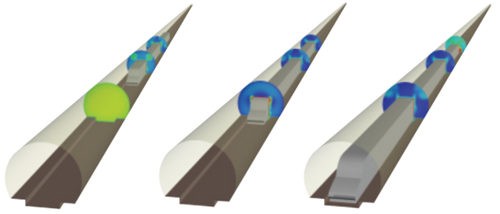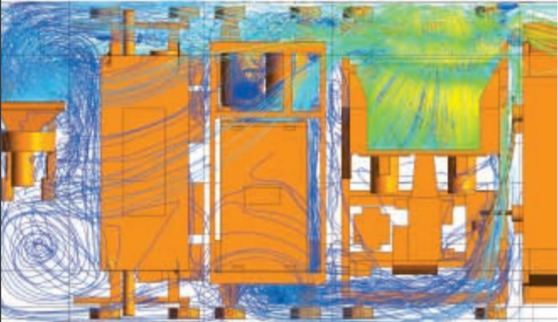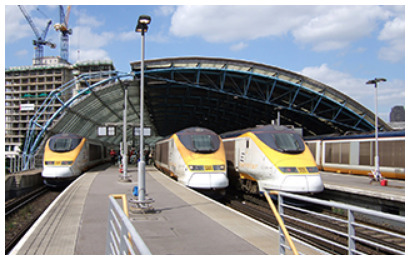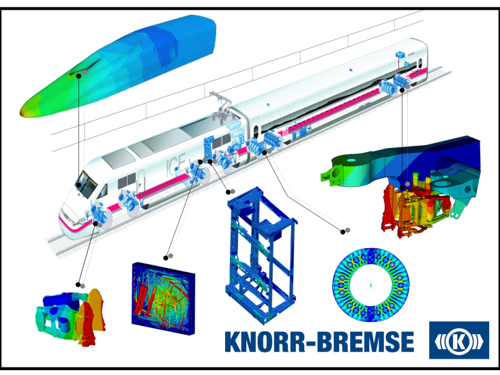Design and Simulation Solutions for the Rail Industry, including:
- Rail-Wheel Interaction
- Rail carriage HVAC
- Stress, Strain, Fatigue…
- Contact, Links, Joints…
- Vibrations
- Gearboxes
- Loading, unloading; hopper…
- Next-generation / Hyperloop
- Signalling, software certification

Optimising heating, ventilation and cooling (HVAC) of train carriages
Regulations and customer demands put pressure on rail designers to deliver passenger coaches with comfortable climates. In the past, Siemens engineers spent about four months testing passenger coaches in a climate wind tunnel to validate the design of the heating, ventilation and cooling (HVAC) system. Now they use ANSYS Fluent computational fluid dynamics (CFD) software to validate the design before building the first coach to reduce the testing time and cost by up to 50 percent. Read more

Ventilating giant railway tunnels
When designing a railroad tunnel, the ventilation system is a critical component. The ventilation units themselves consist of longitudinal jet fans that are placed at several positions along the tunnel.
Traditionally, 1-D or 2-D simulations have been satisfactory to predict the average pressure correctly inside the tunnel. Only by means of a complete 3-D simulation, though, is it possible to obtain an accurate estimate of the velocity components, magnitude and their distribution in the tunnel sections in order to allow for accurate fan sizing. Read more

Preventing traction problems in extreme weather
Simulation helps prevent traction problems for rail travel during extreme weather conditions. Read more

Model-based software development environment
Model-based development in the railway domain: Interlocking systems comprise thousands of controlled elements with life cycles lasting 30 years. For their design, Siemens decided on the SCADE Suite model-based development environment. Read more

ANSYS in Ground Transportation – Knorr Bremse
Problem
Knorr-Bremse is searching for new and innovative measures to improve the safety of trains, including advanced braking systems.
Solution
The company uses ANSYS structural mechanics simulation in conjunction with HPC for a wide variety of application including strength analysis of brake units, static and dynamic analysis of brake control units, fatigue analysis of multi-bolted joints and topology optimization of the parts of brake units.
“ANSYS tools help us improve the quality of our products, ensure the
satisfaction of our customers and be competitive in the market.” – Knorr-Bremse
Want to learn more about LEAP’s solutions?
Complete the form and our team will contact you to discuss your needs.
